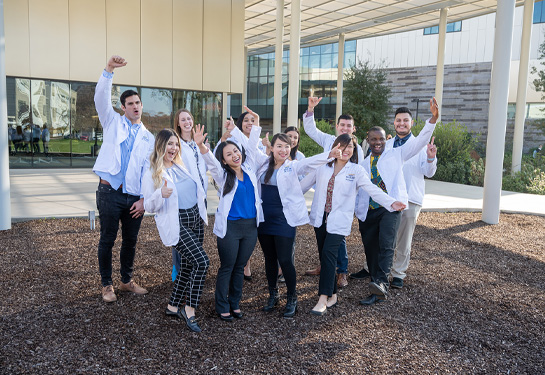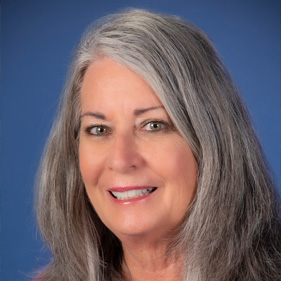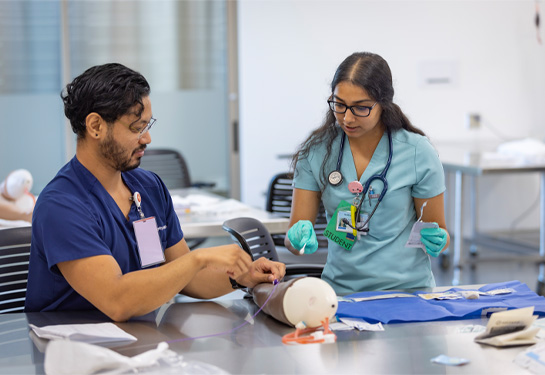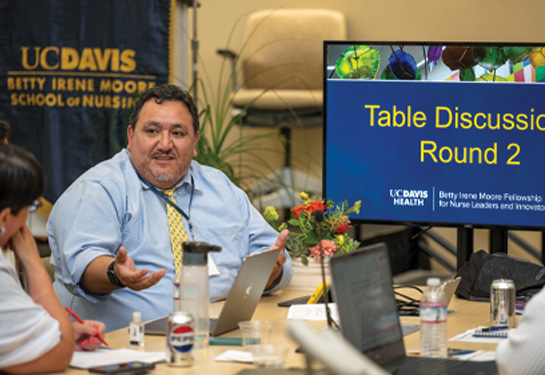What is a physician assistant?
National P.A. Week offers chance to learn more about the profession
National P.A. Week, which takes place Oct. 6-12, celebrates the contributions of the more than 168,000 physician assistants caring for patients nationwide.
Registered nurses, physicians, pharmacists, therapists — the list of health care professionals who make up teams that care for patients and families are very well known. But chances are, when you throw a physician assistant — known as a P.A. — into the mix, you may get a puzzled look.
“Some people I know are still confused,” admitted Maria Delfino, a second-year P.A. student at the Betty Irene Moore School of Nursing at UC Davis.
By definition, P.A.s are licensed clinicians who practice medicine in every specialty and setting. P.A.s conduct physical exams, diagnose and treat illnesses, and order and interpret tests. They also counsel on preventive health care, assist in surgery and write prescriptions.
In one study, half of people surveyed did not know P.A.s could prescribe medications and diagnose illnesses. Another common misconception is that P.A.s are assistants to doctors and work under a physician’s medical license. In fact, P.A.s are certified nationally and licensed by the state in which they practice. They only achieve this designation after more than two years of post-graduate education, more than 2,000 clinical practice hours and successfully passing the Physician Assistant National Certifying Examination. In addition, some pursue postgraduate fellowship training.
UC Davis Health is home to both practicing P.A.s and the Physician Assistant Studies Degree Program at the School of Nursing.
Promoting and advocating for our profession is an ongoing need across the nation as we continue to grow.— Teresa Thetford, UC Davis physician assistant program director
“We prepare our students to become the highest quality and caring P.A.s by not only having a rigorous academic program, but also by teaching professionalism, leadership, diversity, equity and inclusion and P.A. profession advocacy,” said Teresa Thetford, program director. “Promoting and advocating for our profession is an ongoing need as we continue to grow.”
Growth and need
Established in 1967, the P.A. profession currently has more than 168,000 practitioners in the U.S., engaging in more than 500 million patient interactions each year. As the need for more primary care providers rises, the P.A. profession grows. It ranks second in the Best Health Care Jobs list in the nation. The U.S. Bureau of Labor Statistics predicts the number of P.A.s will grow 27% by 2032, much faster than the average for all occupations.
The impending lack of providers underscores the need for P.A.s. By 2034, the Association of American Medical Colleges projects a shortage of more than 37,000 physicians. P.A.s are poised to increase access to quality care.
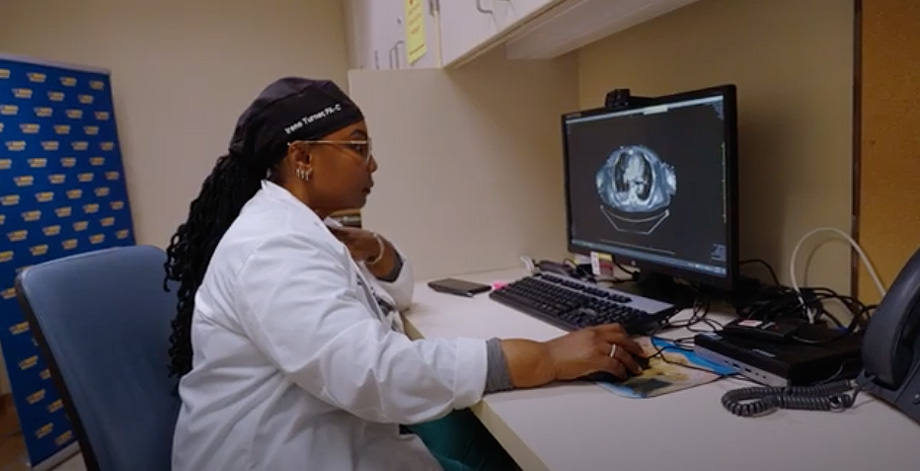
“In many health care settings, physician shortages make it more difficult to recruit doctors. P.A.s can bridge that gap by supporting access to care for our community,” said Christi DeLemos, chief of advanced practice at UC Davis Health.
According to the National Commission on Certification of Physician Assistants, 33.8% of P.A.s in primary care, 36.1% of P.A.s in family medicine and 35.1% of those specializing in general pediatrics are dedicated to serving underserved communities. As far as specialty practice, some of the largest numbers of P.A.s are in areas including emergency medicine, dermatology, orthopaedics and internal medicine.
At UC Davis Health, more than two dozen P.A.s work in specialties including plastic surgery and orthopaedics. They also serve as educators and support the next generation of residents and advanced practice team members.
“Their training equips them to work in a range of specialties and surgical practices making them incredibly flexible team members who add value. There are also numerous studies that confirm that patient experience in team-based care with P.A.s continues to meet high standards for patient-centered quality care,” DeLemos explained.
"Coming from an underserved background and being the first to graduate college in my family, becoming a physician assistant has changed the trajectory of my life; not only in the economic situation of me and my family, but in the way I can impact the lives of my patients. I love my job and hope to continue providing excellent care to those who need it,” said Albert Chang, a P.A. in the Department of Orthopaedic Surgery at UC Davis Medical Center.
To improve new P.A.s’ transition from school to practice, the health system offers a fellowship program. That Advanced Practice Fellowship program recently earned three-year accreditation from the Consortium for Advanced Practice Providers, a designation recognizing the program for the highest standards of rigor and quality.
Future providers advocate now
Students in the School of Nursing, which prepares roughly 65 future P.A.s each year, hope to leverage P.A. Week to educate peers and patients on the profession.
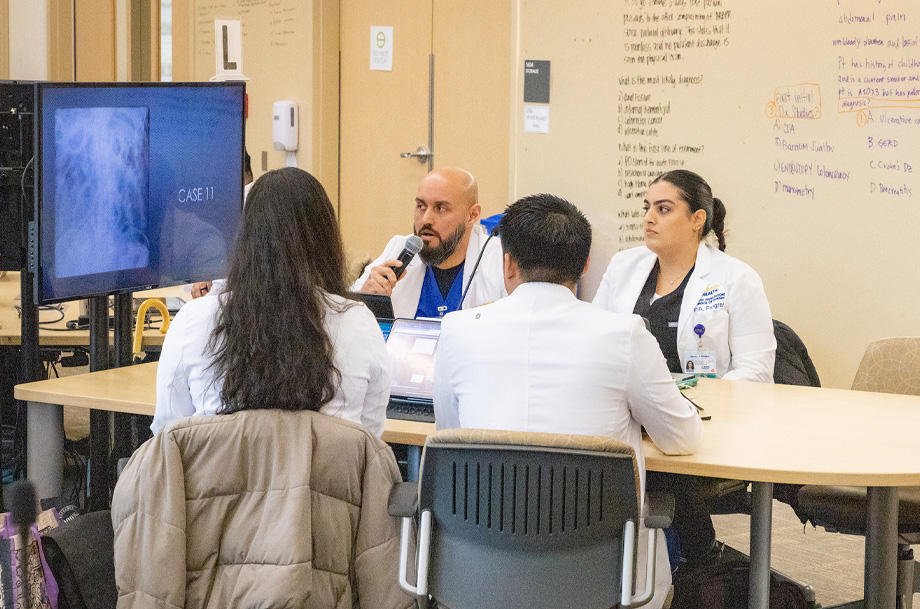
“We’re advocating for our profession and helping people understand what it is so that we can provide to the height of our training,” second-year P.A. student Serena Ling said.
Ling and Delfino are assuming leadership of the UC Davis student chapter of the American Academy of Physician Associates (AAPA), now that the Class of 2023 has completed its program. (AAPA is promoting a name change to physician associate rather than assistant, which some argue adds to the profession’s identity crisis.)
“For me, I love the idea of working in a team. P.A. fits my personality a lot more,” Delfino said. She thought medical school was in her future, but then: “the work-life balance as a P.A. was attractive as well as the idea you can switch specialties.”
With their student AAPA chapter getting off the ground, they plan to help bridge access issues in the community and volunteer where possible. One option they are eyeing is working with local food banks who serve the unhoused.
“I love being present for patients,” Ling said. “Everything that’s happened so far in P.A. school has confirmed that I’m in the right place.”


